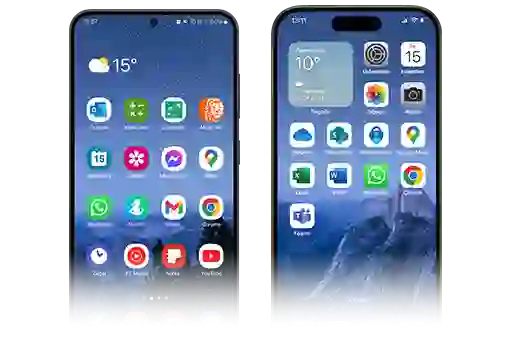Jump to:
Price works wonders – but does it really?
Extra features – less or more?
Documentation and certificates
How to choose MDM? With so many mobile device management solutions on the market today, it’s easy to get lost. Comparing them all is like trying every single dish at a massive hotel buffet – tempting in theory, but in practice you’ll run out of time, energy, and room on your plate pretty quickly. Instead of analyzing every possible aspect, it’s better to focus on the ones that really matter to your organization. In this article, we point out what’s worth paying attention to.
Price works wonders – but does it really?
It’s natural for price to be the first selection criterion, but the cost of acquiring an MDM solution depends on many factors. If you go by price alone, it’s easy to overlook important elements of the offer. It’s a bit like buying a car – a low price may be tempting, but if the vehicle doesn’t have air conditioning or the servicing will cost a fortune, that ‘bargain’ quickly turns into a trap. When comparing MDM solutions, it’s worth checking:
- Type of access – does the license provide full system functionality or only part of it? With changing legal regulations and growing cyber threats, companies need to react flexibly. It’s worth anticipating what functions you’ll need in the coming years, not just ‘here and now.’
- Applications – are all the apps needed for the system to work (e.g., the MDM agent) as well as those required for specific features included without extra charges?
- Contract length and the actual monthly cost of using the system.
- Number of devices you can deploy under the solution or within the chosen licensing model.
Extra features – less or more?
A good starting point is to make a list of requirements and compare it with the vendor’s offer. The richer the list of features, the easier it will be to adapt the system to the organization’s evolving needs. A more comprehensive MDM can also provide features you hadn’t even considered.
Example? Kiosk Mode – it allows you to configure a device so that it runs only one or a few selected applications. It’s perfect for retail points of sale or field teams. Many companies discover its potential only after implementation, even though it could have been useful right from the start.
It’s also worth checking whether the vendor is open to developing the system in cooperation with customers. This approach gives you an edge – the MDM and its features can ‘grow’ together with your organization.

Documentation and certificates
An important step is to review the system’s documentation and specifications. Look closely at the vendor’s assurances and check whether the chosen solution doesn’t overuse capabilities provided by third parties, e.g., Google as the creator of Android. Sometimes MDM vendors stretch the limits of integration or operating system policies, which can result in end users bearing the costs when suddenly disabled features stop working due to non-compliance.
When choosing a vendor and the software itself, pay attention to user privacy, especially if the company allows BYOD. Any misuse of an MDM system to infringe user privacy or the integrity of personal data on the device should be reported, and such features should be disabled in the BYOD model.
A good-quality MDM system complies with all standards set by Google or Apple and under no circumstances breaches privacy. Of course, if the device owner (in BYOD cases, the employee) consents, company security policies may cover part of the device’s private area – but this should never be the default.
MDM also supports compliance with ISO or GDPR requirements. When shifting responsibility for legal compliance, choose a vendor with up-to-date certifications – they provide objective confirmation of compliance and guarantee the highest standards of service and data handling.
License model – cloud or on-premise?
Many MDM solutions are available in cloud versions. This is convenient for fast deployment, no need to maintain servers, and easy updates. However, some organizations still need on-premise systems – for example, in regulated industries or critical services.
When deciding, check whether the vendor offers both models. That way, you avoid having to give up a great system just because the right deployment option isn’t available.

Technical support
Like any other software, MDM requires solid technical support. Even the best system loses value if, at a critical moment, you’re left alone with a problem. Support scope can vary greatly depending on the services offered, so check:
- Does the vendor provide support throughout the purchase process – from testing to deployment and after-sales service?
- Is support included in the license cost or does it require an extra fee?
- Does the vendor offer extended and flexible SLA24?
- What contact channels are available (email, chat, service queue) and during what hours?
- In what language are the services, documentation, and admin guides provided?
- Does the license include access to a knowledge base and other educational materials?
- Can you count on migration support?
- Does the vendor offer administrator training?
Good support means not just quick fixes for breakdowns but also help in getting the most out of the software.
Summary
Choosing an MDM system, like other cybersecurity tools, requires careful analysis. Migration between solutions is costly and complicated, so the decision should be made with security, functionality, and the company’s long-term needs in mind.
It’s worth investing time in testing, consulting, and talking to vendors so you can later enjoy a solution that flexibly meets your organization’s demands.
A comprehensive solution for your business.

Originally published: 02.02.2023
